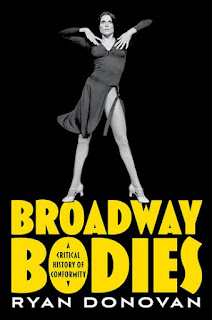 examines the body politics of casting Broadway musicals in the five decades beginning in 1970.
examines the body politics of casting Broadway musicals in the five decades beginning in 1970.
Donovan applied the "Page 99 Test" to Broadway Bodies and reported the following:
If you open to page 99 of Broadway Bodies, you’ll land in the middle of a chapter called “Must Be Heavyset: Casting Fat Women in Broadway Musicals.” This chapter is the second (of two) in a section on body size and casting; the first focuses on the 1981 musical Dreamgirls, while this chapter mostly centers on the 2002 musical Hairspray. On page 99, I am looking at the intersections of size and Blackness in Broadway musicals and how the writers of Hairspray depend upon the trope of the “Big Black Lady” (to use scholar Dan Dinero’s phrase). This page gives readers a clear view of the kinds of arguments I make in the book about how Broadway musicals seem inclusive, yet if you dig a little deeper you’ll discover a great deal of ambivalence toward non-conforming bodies.Visit Ryan Donovan's website.
On page 99, I explain that the musicals I cover in the book “give the appearance of inclusion without addressing core issues of exclusion: the vast majority of musicals remain directed, designed, produced, and written by white men for audiences comprised of primarily white women.” Hairspray, in particular, centers on questions of inclusion and exclusion that are resolved only in its narrative. The following sections of the book look at similar yet not identical ways that Broadway casts sexuality and disability. As the book’s tagline says, “Broadway has body issues.” It also gives them.
--Marshal Zeringue



